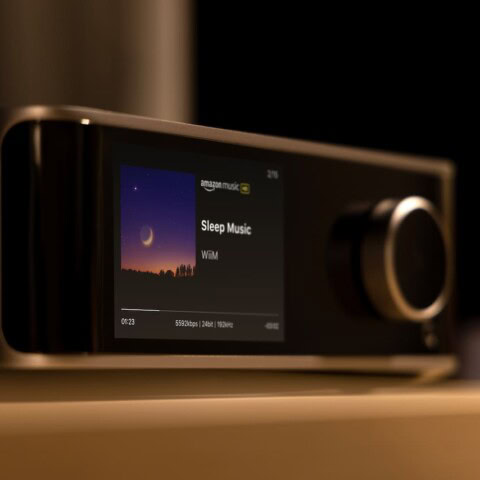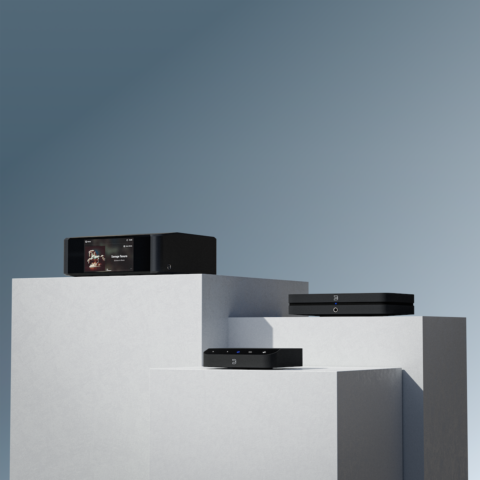$375
4.5 stars
Here’s a simple, no-frills digital to analogue converter that even has Apple’s permission to convert the data guts of its iPods, iPads and iPhones. Golly.
Digital sources don’t get much simpler than HRT’s iStreamer: plug one end into an iPod (or iPhone or iPad) and connect the other to your audio system using RCA cables. Push play, music comes out the speakers and that’s all, folks.
Or at least that’s the way it seems on the surface. This deceptively basic little device has a trick up its metallic sleeve – unlike almost all other iPod docks, it’s got a direct line to the digital data stored on the Apple device. So instead of getting an analogue signal passed to it by the bits inside the iPod, it takes the digital stream and converts it internally using its own digital-to-analogue converter before handing it to the audio system via its own output stage. If these components are more capable than the iPod’s own internals, then the results will logically be better.
Wadia was the first to convince Apple to grant access to the precious digital stream with its 170iTransport. The technology has become more common but it’s still not exactly all over the place as yet. Naim does it with its UnitiQute music system, Yamaha offers it on a couple of CD players and other manufacturers are getting in on the act, but the iStreamer has to be one of the less expensive ways of breaking into your Apple devices and getting the good stuff to your hi-fi. At a mere $375, it’s not a huge ask but then again, it is quite limited in its functionality. Forget about plugging in anything besides one of Apple’s gadgets or a computer.
Features and Construction
As you’d expect, there’s not much to the iStreamer. It’s built into a compact but solid rounded metal chassis, with RCA outputs on one end and a couple of computer connectors on the other – USB for the iPod and mini-USB for power from the supplied wall wart (all in white of course). It comes with all the necessary cables, including a set of budget RCAs that should be replaced with a better quality pair at the first opportunity.
An indicator light on the front tells you if the unit is getting power (solid) or receiving a signal and at what data rate (flashing). It will support 32, 44 or 48k at 16 bits, so there’s no high res file support.
One of the iStreamer’s most intriguing features is that it offers full Host Mode support, which means it dictates the synchronization of the signal via its own clock rather than allowing the Apple device to have a say. This theoretically reduces jitter, which is digital audio’s rampaging drunken white elephant.
Setup
The iStreamer couldn’t be any easier to use, in fact. Its manual covers a single page, comprising of seven bullet points. In short – plug in a few cables, push play and then:
“7. (Optional) Have a glass of wine or other cocktail and sing along or play air guitar as appropriate, while marveling at how great even the lowliest MP3 can sound, never mind hearing lossless files in all their glory.”
Sound Quality
Even without a bottle of alcohol powering this reviewer, the iStreamer impressed from the get-go. The sources were my iPhone 3GS and iPod Classic 80Gb, running from the iStreamer into a StereoKnight Silverstone Balance transformer passive preamplifier to Viganoni and Viganoni Sachem monoblocks and Theophany M5 Series 2 floorstanders.
Spinning (if that’s the right word for playing music from an iPod) Abdullah Ibrahim’s Blues For A Hip King (ripped at 192kbps), I immediately noticed that the sound emanating from my speakers seemed to have more clarity than I’m used to from an iPod based feed, even more so than my Pro-Ject Dock Box Fi (bar Wadia’s excellent 171iTransport through the 151PowerDAC). This makes sense as the Pro-Ject is doing the best it can with the analogue signal as passed by the iPod, while HRT’s device is getting the best available feed.
Swapping to Beck’s Sea Change album proved an immersive pleasure, with the iStreamer delivering the goods in a big way. Hugely detailed audio was laid all over a deep soundstage, with weighty low frequencies and a treble that was remarkably free from glare or harshness. At this point, I was already impressed and very much paying attention, but swapping the interconnects from ultra-budget Audioquests to a set of half metre Slinkylinks made a big difference. Quite suddenly, things went from “mmmm, that’s nice” to “holy heck” as a layer of haze was lifted from the sonics, the dynamics sharpened up and the detail levels were elevated. Most impressive of all was the fact that this album is ripped at 256kbps; after all, I was just warming up the iStreamer and hadn’t started playing any lossless or uncompressed files.
When I did get to the uncompressed files, things improved still further and I was even more cheerful than before. This is “CD quality” if I may abuse the old cliché once again, and there’s not much to moan about at the price. The great thing about the iStreamer’s performance over the test was that I was happy to just set the iPod to shuffle through its track list without worrying about the bitrates. Yes, there’s a difference, and no, you’re not likely to care unless you’ve got a mess of 128kbps files (or worse) lurking in the depths of your iPod.
Negatives
Any negative traits here are minor, subjective and completely unrelated to the iStreamer’s sonic performance. First up – it’s an iStreamer, so no plugging in a computer or your Android phone or any other gadget, widget or thingy with music files on it. You’re either using a compatible Apple product or you’re humming ‘The Sounds of Silence’ to yourself in a quiet room. Still that’s no worse than any other iPod dock.
Second – the fact that your iPhone or iPod is hooked up to the iStreamer means you can only control the flow of music by grabbing said device. That’s fine if it’s next to you, not so cool if it’s way across the room and AC/DC shuffles on just when you felt like John Coltrane.
Third – there’s no high res file support.
Conclusion
Sonically, HRT’s iStreamer is a winner. It’s definitely a long way ahead of a 3.5mm cable running into an RCA adaptor or a 3.5mm input and should sound better than most analogue iPod docking solutions. It’s also simple, compact and easy to use.
The only limitations are as listed above and a USB DAC such as the Zero or one of the Firestone Audio units we’ve tested will offer way more versatility and connectivity for not much more loot. On the other hand, if you want nothing more than a high quality digital audio solution for an Apple i-something, it’s hard to look past this product. ASHLEY KRAMER


















With regard to the Negatives: With Tango – the remote app available in the iTunes store – you can now control your iPad with your iPhone (or iTouch, and vice-versa)/ So, if you’ve got an HRT iStreamer and it’s hooked up to your iPad, you can control it remotely using your iPhone – just like a CD player!!!!
and thanX for the thoughtful review!!!!